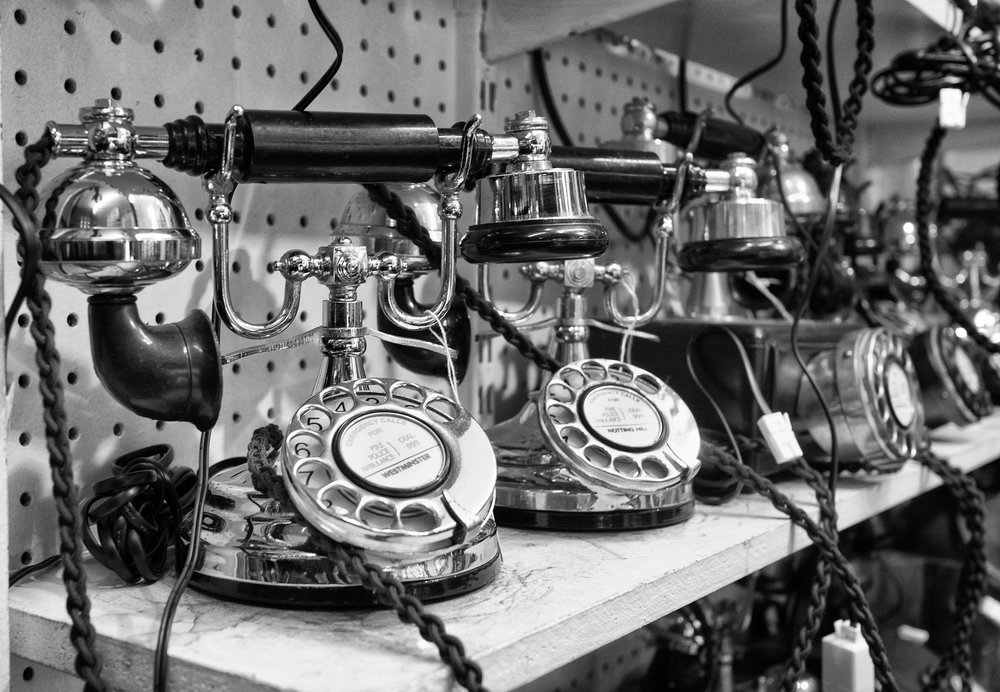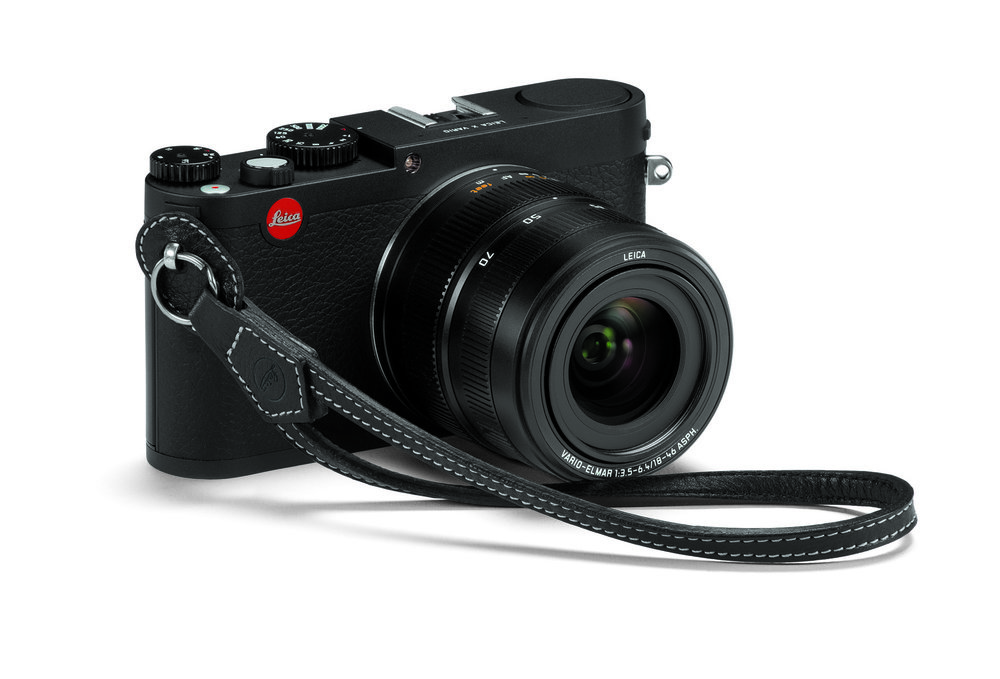
Leica’s X Vario — a camera that polarised opinion from the day it was announced — has been discontinued according to the B&H website in the USA. The fixed-lens 35mm Leica X (Typ 113) is also listed as no longer available. Both were good cameras and, in the case of the X Vario, I had a lot of fun using the compact zoom and found it to be a congenial travel companion on many occasions.

The X Vario was unfairly damned from day one because of its perceived “slow” zoom, ranging from f/3.5 to f/6.4, and it never fully recovered from the initial criticism. For my part, though, I never found the slow lens a hindrance and appreciated the fact that the Vario-Elmar 18-46mm zoom lens was optically superb. To have introduced a wider aperture range would have increased the size of the lens to unacceptable proportions and that is precisely why Leica decided on the “slow” maximum aperture of f/3.5. The Leica X, on the other hand, didn’t suffer from this perceived handicap. Its f/1.7 Summilux lens was plenty fast enough to compete with the main opposition, the Fuji X100. Yet even this didn’t save it.
Viewfinder
While much attention was focused on the slow lens of the X Vario, there was one overwhelming reason why neither the XV nor the X were outstandingly successful. It can be summed up in one word: Viewfinder.
Or lack thereof. The decision to follow the X1 and X2 with a new range of viewfinderless cameras was a mistake. It was the external accessory viewfinder that ultimately killed both the X Vario and the X. Very few photographers now want to stick an accessory viewfinder in the hotshoe when there are so many cameras — from the Fuji, Olympus, Panasonic and Sony ranges for instance — that combine good performance with a sensible built-in finder.
Incidentally, let’s not confuse these two APS-C mirrorless cameras with the new Leica M10 rangefinder. Sure, if you want an electronic viewfinder on the M10 you have to slot the Visoflex unit into the hotshoe. In the case of the new M, using an external electronic finder is entirely acceptable. Most M10 owners will spend 90 percent of their time with the optical rangefinder and that is why they will buy the camera. The Visoflex EVF is an accessory, rather than a necessity as it is with the X cameras.
If Leica had re-engineered the X Vario and X to incorporate a finder (perhaps in place of the flash unit) both cameras would have been more popular and would probably still have a lot of life left in them.
In my opinion Leica would be wrong to introduce similar future cameras without a built-in viewfinder. A tiny camera without a viewfinder, such as the Panasonic LX15 (which I covered here) is perhaps acceptable but not a camera with the pretensions of the X Vario or the X. The Q, with its marvellous built-in finder, has shown us the future. Without doubt, if the Q had had to rely on an external viewfinder it would not have been one quarter the success it has been.

Withdrawal symptoms
This brings me to the T, or TL as it is now called. This camera also suffers from viewfinder withdrawal symptoms. The Visoflex looks even more ugly on the little T than it does on the M10. Good as it is, to have it sitting on top of the TL is an anachronism.
I was disappointed when the updated TL was introduced because the opportunity to add a viewfinder was missed. I had hoped for a complete redesign, bringing the camera more into the traditional camp rather than continuing to pander to the boutique market. In the meantime, Fuji makes the camera that the T could have been.
There is no mystery as to why Fuji has stolen the APS-C market from under Leica’s nose. The X series, particularly the X-Pro2, is more Leica than Leica. Bill Palmer made this point cogently in an article on this site last May. The Fuji’s style and traditional control layout appeals more to the typical Leica lover. That’s why so many potential T buyers have instead chosen Fuji.

Leica chose to be radically different with the T and it has been a disappointment to many. While I do know several T owners who love the camera and like the touch control system, far more take the opposite view and have gone elsewhere. Since the introduction of the T(L), Leica has largely offered the APS-C market to Fuji on a plate.
The Leica range is crying out for an traditional APS-C camera to use with the impressive range of TL-mount lenses. If Leica designers really wish to recover their stake in the APS-C market they will take the X or X Vario body, introduce an integral viewfinder in place of the flash and add the lens mount. For a more radical approach, dare I suggest a mini SL with the same control system as the large full-frame camera? That could be a real winner and would create a coherent family of models sharing the same lens mount.

New life
A new camera on these lines makes common sense all round. I can guarantee that such an APS-C system camera with more traditional Leica values would sell in great numbers. What’s more, it would put new life into the TL system lenses and provide Leica with a clear path from APS-C to full frame.
Meanwhile if you can accept having to use an accessory viewfinder, there are probably some bargains to be had. I would especially recommend the X Vario because, despite the lack of viewfinder, it performs well beyond expectations. The lens is outstanding, despite its slowness.
More reading on the X Vario and X:
- Leica X Vario: Macfilos full review
- Leica X (Typ 113: Macfilos full review
- Leica X Vario in Beijing
- Leica X Vario Revisited — Simplicity and Elegance
_______________________
- Subscribe to Macfilos for free updates on articles as they are published. Read more here
- Want to make a comment on this article but having problems? Please read this


When it comes to colors and 3D pop, not even Fuji’s flagship come close to the X & X Vario. Yes, These duo has lots of shortcomings.
But people who buys Leica knows exactly what they get. That glorious micro contrast on the built in lenses on both X were superb.
I don’t get it at first. Being a long time Nikon, Canon DSLR user and spend few years using Fuji X-Pro1, XE2 and XT-1 its hard to justify these X’s. But i have come a long way to realize that shooting Leica its not about features, but instead the ‘raw’ image quality, it produces is simply astonishing! Fuji colors are okay to me, but lacks micro contrast and there’s something lacking about the files.
It amazes me people comparing Fuji and Leicas in the aspects of ‘value for money’ &’features’. Since when Leica try to compete with anyone else in terms of features and the most important question is, since when Leica try to produce a so called ‘perfect camera’ like Fujis and others?
I agree on all this. The X Vario will come to be seen as a classic, just like the 13-year-old Digilux 2. Anyone buying a used camera now is unlikely to suffer much depreciation. Moving on, though, I think the T/TL range will begin to take over. The 18-55-TL standard zoom lens is very similar in signature to the lens of the X Vario and, when combined with a T or TL body isn’t significantly bulkier or heavier than the Vario. It also gives a lot of versatility in case you want to use other lenses or, even, M lenses. This doesn’t mean, though, that one day I won’t buy an X Vario if I see one at a price I can’t refuse.
Mike
I love my X typ 113 – recently purchased preowned from Red Dot in London. I have actually bought it to sit between my iPhone, and my DSLR. So the viewfinder issues was never a consideration.
However my first Leica experience, has led to me starting a saving account for a Q…
I am happy with the X and will spend the next year or two experimenting and publishing my results. But I like the Q, the idea of it, and what it offers. So will move there, and probably keep the X too.
I’ve always loved the X Vario. Very underrated and I know many Leica fans who recognise it for what it is. If only it took the new Visoflex instead of the old VF-2 I would strongly consider buying one now. The Q is a completely different kettle of fish –polar opposite in fact — but I think the two complement one another really well. I hadn’t thought about this before but you are right.
Cheers for the advice Mike. I have considered the visoflex as an additional purchase, but decided to add the money to my Q fund instead. I am loving the X, it is a cracking little piece of engineering, and the images it produces are amazing.
I am also enjoying this site, (yes a side issue). However I used this and a few others in my research before purchasing the X. Ta Dave
Excellent analysis Mike. I agree with much of what you say. The elephant in the room that you have overlooked, however, is the pernicious effect on X Vario sales of one of the most ill-judged – dare I say cack-handed – marketing campaigns in living memory. Scroll back to 2013… I still had an M7 .85, an MP4 .85, an M2, an R7, and about 15 Leica lenses in M and R mount. I was "Leica Man" and had been for many years. However I was hugely frustrated with the digital M offerings. Then Leica starts to run a teaser campaign for a "Mini M" – their words not mine – which turned out to be the X Vario… I vividly remember to this day the anticlimactic reactions on the forums and blogs, ranging from betrayal to disbelief, from derision to outright professions of disgust. The X Vario could have been a gold standard APS C for Leica but through a monumental marketing misjudgement they alienated their core market and shot themselves in the foot with reviewers and early adopters alike.
The X Xario never stood a chance of a fair start and Leica only had themselves to blame.
Me, I went Fuji and never looked back…
Bill, you are right. I didn’t mention the X Vario launch because I’d covered it in the various linked stories from the time of the introduction. If only they had made it a variable-lens camera they would have had a hit. No need for the T. I imagine the T mount was in development at the time of the X Vario and X launches so it is a mystery why Leica’s marketing people didn’t take this opportunity.
To Nico: I should be interested to hear your views on M8 vs XVario.
Ah yes, the X Vario… wonderfull camera, and if I have to choose, I take an EVF-less Leica over any Fuji camera. I really don’t understand the attraction of Fuji cameras, and believe me, I tried many! Anyway… I don’t have a Vario at the moment (traded one for an M8), but if I find one for a good price, I will buy it without any hesitation 🙂
Does the traditional handling not appeal? It is more familiar to say M3 users than any current Leica digital camera, other than, perhaps, the digital Ms. For me dials that you can read are far easier to use than any menu or touch screen.
William
Hi William, the Vario has dials for aperture and shutter speed, and buttons for WB and ISO. So there is no need to use the menu often.
I’m not really familiar with film Leicas. I am however very familiar with digital Leicas, and using a Fuji (XE2 or Pro1) after using a M8/9/240 always felt like a step back to me. I’m not saying Fuji makes bad cameras, they’re just not for me…
Thanks Nico. In addition to almost all LTM models, I have the M3, M2, M4, M4-2, M4-P, M5, M6 and M7 as well as the digital M8, M9 and M240. I know the layout on the X-Vario from the X-1. The Fuji X-Pro 2, which I have, is as good in terms of handling as any of those cameras because of the physical dials. The Leica T does not rank near any of those cameras in terms of handling and the Fuji X-Pro 2 is far ahead of it. Indeed I would put the X-Pro 2 ahead of the M240 in terms of handling. My way of photographing is that I see a scene that I want to photograph and I make adjustments to exposure before I raise the camera to my eye. That is the quickest way for me. All of this is personal, of course. Despite my reservations about recent Leica designs, I have ordered an M10.
William
I think the TL was designed to attract draw younger photographers into the Leica fold. That’s why they tried to meld the cameraphone idea to the enthusiast camera idea. Problem is that it is far too expensive for the cameraphone set (especially since there’s no phone) and the minimalist design is inimical to the desires of much of the enthusiast market.
You are absolutely right on that, Kenya. They imagined the T(L) would appeal to the smartphone set, a younger audience than Leica normally attracts. But also they saw it as a "boutique camera" that would sell to people with more money than sense and who would be attracted by all the fancy bells and whistles. I don’t think it works on either count. My experience is that the vast majority of people are now happy taking photographs on their smartphones. A minority, however, are flattered by their first attempts with the smartphone and start thinking of a "proper" camera. In this quest they are likely to overlook the T and go for a "proper" control layout on something that actually looks like a pro camera. Fuji recognise this and have totally captured the market. Leica would never hope to outsell Fuji on price alone but, with the right sort of APS-C camera they could at least keep their Leica users and more wealthy casual clients happy.
I think you’re probably right, Mike, about the absence of an EFV. My X-Vario would probably be the last camera I’d ever part with. I now leave the Olympus VF2 permanently on and simply love the ease of switching between VF and screen and obviously the additional shooting angles. To keep something resembling "compact" also with regard to carrying cases, I ditched the handgrip (which I liked) in favour of the VF. I wish Leica would do what you say, and also include the present XV lens among the interchageables, but as they won’t I’ll go on enjoying the quality of what I’ve got.
Mike – is there any hope that the brains behind Leica are listening to you and others in this regard ? Leica has pushed out a lot of product in the past few years – SL, T, Q, and now with the M10 on the shelves, you have to imagine those industrious Germans are up to something. I agree with your comments on the X Vario – I picked one up used in part due to your advice and use it to take reference photos for large scale landscape paintings. Despite the lack of a viewfinder it still fits the bill and produces perfect (for my needs) images
Mike, good that you have had positive results with the X Vario. I’ve been keeping my eye on secondhand values and had in mind to pick one up as a travel camera if I ever saw a really cheap example. The only problem is it uses the old VF2 when I’ve moved over to the Visoflex.
Whether or not Leica reads my ramblings I don’t know. But I’m only repeating what most Leica fans think. I suppose it is easy for us to snipe from the sidelines but the whole X/X Vario must be seen as misstep against the background of the Q, SL and the newly minted M10 (which I am told by several dealers is the most successful digital M launch ever. Orders are through the roof everywhere).
It seems a very strange concept to deny the Leica-man a fully inclusive APS-C camera.
The idea that Leica will skew their full-frame pitch doesn’t really stand up… In fact I would suggest that rather than damage that market, a decent new X offering would take business from Fuji (for one). I suspect that most Leica habitués would do the same…
If you want a APS-C camera, you don’t look at the offerings and say… Ah OK… I will go full-frame… Rather one says… I will buy a Fuji (or something).
The T(L) on the other hand is a different matter. Surely this is the blueprint for Bill’s "camera-phone"? And again, all it needs is a viewfinder. I really like what they did with the T and I was looking forward to a replacement that would actually compete with the Fuji range, but it wasn’t to be. Additionally, it works in tandem as a compliment for the SL and these two cameras are going to be Leica’s future… The M will continue in its niche.
The sad thing, Stephen, is that if the X Vario had been what everyone expected, an interchangeable-lens camera, it would have been a success. It would have saved Leica millions in developing the too-smart-for-its-own-good T range. It would have paved the way for a really serious entry into the APS-C market and it would have kept brand loyalists happy. It would certainly have prevented most of them from defecting to Fuji.
I hear there is a CEO job up for grabs in Wetzlar. John Shingleton thinks I should come out of retirement and apply!
Yes and there would be no need to stop your blog Mike, since I seem to remember that your new boss is already an avid reader!
If Leica produced a camera as good as the Fuji X-Pro 2 in full frame at a reasonable price, it could kill the markets for the M and the SL at a stroke. It would also be very expensive to produce because of the combined OVF/EVF, though, and, hence, it would probably be entering the market at a high price. Hobson’s choice for Leica, therefore.
I agree about the viewfinder, but that is probably not the only reason for the issues with the Leica X range. Competition at lower price points is very fierce, much more so than at the usual Leica price points. Also the compact camera market is more or less dead, replaced by smartphones. Look at any public event now and you will see a sea of phones held aloft to record the even. There is usually not a compact camera in sight.
Leica has a tough slog ahead of it maintaining existing market segments and finding new ones.
William
I wasn’t thinking of full frame. Leica have that adequately covered with the SL, M and Q. But they could tackle Fuji on APS-C and stand a chance of gaining back a chunk of that market. The TL is reasonably priced for a Leica. But a more traditional version with built-in finder would be a winner.
Taking on Fujifilm would be difficult. They have a superb and extensive lens range and are taking a lot of full frame customers from both Canon and Nikon. I had a look at the TL ( then T) when it came out and I could not find anything about it that made me happy. Shortly afterwards, I picked up a Fuji X-T1 at a trade fair and it won me over immediately with its traditional top plate and superb EVF which worked great with my glasses on, which is how I have always taken and always will take photos. I should mention here that I often use Fujis by just using the rear LCD to take photos if that suits the circumstances.
I know that Leica can produce a camera which will produce higher IQ than the Fuji X system but, as the Americans might say, they will really have to knock it out of the park on price, system and availability to win this particular battle.
William